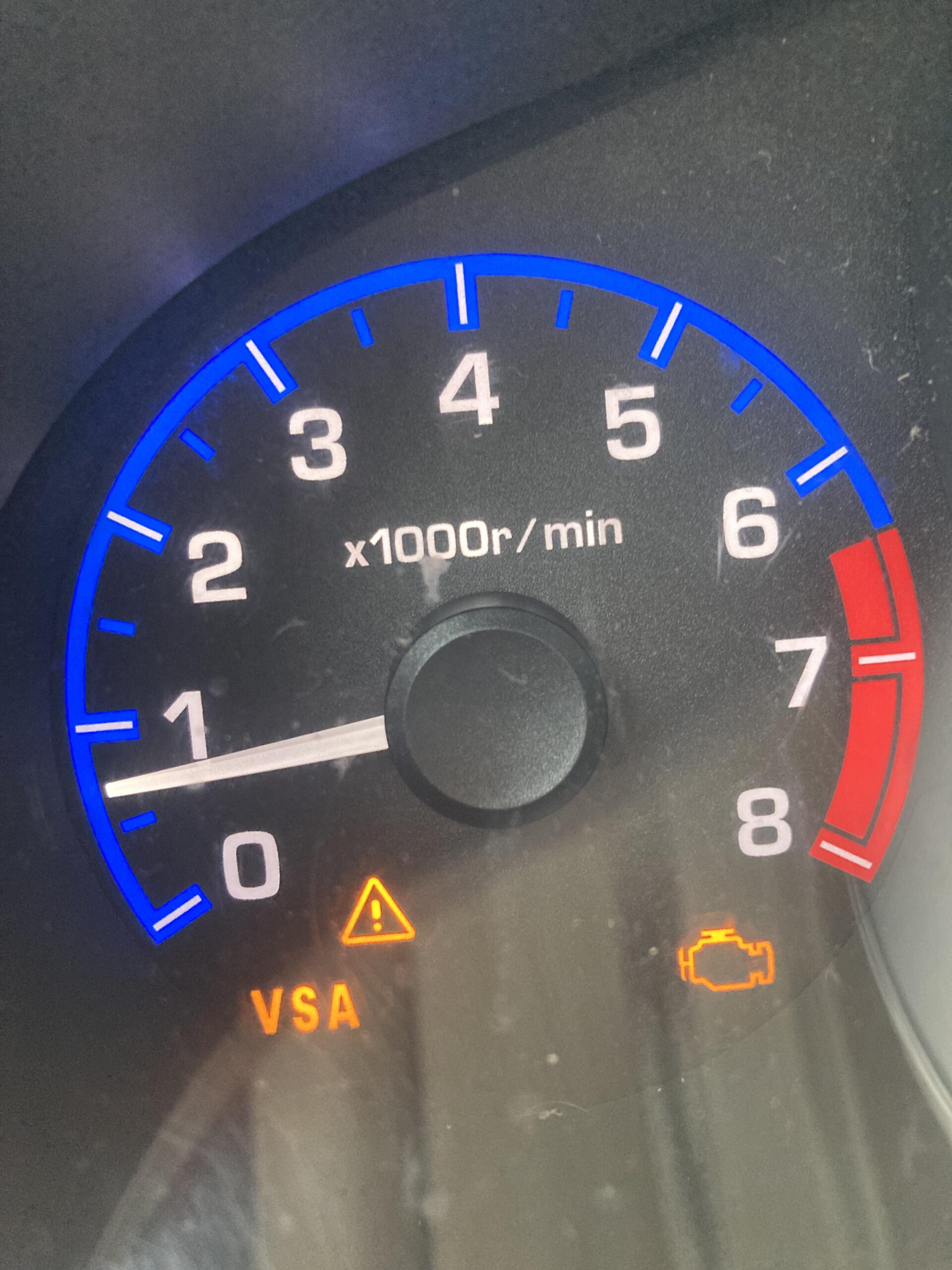2014 Silverado Fan Keeps Running!
If you’re a Silverado owner, you might have observed that the fan of your 2014 Silverado continues to operate even after the engine is switched off.
This situation can naturally lead to some apprehension.
You might be questioning if there’s a larger issue with your vehicle.
Don’t worry!
This article will delve into the potential causes of why your fan might be persisting in its operation.
Further in the discussion, we will guide you on how to effectively tackle these specific issues.
What are The Key Reasons Why The 2014 Silverado Fan Keeps Running?
This issue can indeed be a source of annoyance for vehicle owners, as it could result in a depleted or completely dead battery, and cause wear and tear on the fan component.
However, rest assured; that there are several typical reasons why this might occur. It could be due to a faulty fan relay or a malfunctioning thermostat.
Understanding the fundamental causes will streamline the process of repair.
1: Faulty Fan Relay
If you’re the owner of a 2014 Chevy Silverado and have noticed that the radiator fan continues to run, the first component you should inspect is your fan relay. A malfunctioning fan relay could be the root of the problem.
The fan relay serves as a switch that initiates or halts the cooling process, depending on the engine temperature. If the relay is defective, it could cause the fan to run continuously without any regulation.
One possible situation is a relay short, where the relay might be stuck in the closed position. In such a scenario, the relay fails to control the fan’s operation, leading to its continuous running.
This can put undue stress on the coolant fan mechanism and result in battery drainage. To rectify this issue, a replacement of the engine cooling fan relay is necessary.
It’s important to pay attention to the check engine light. Ignoring this seemingly minor issue could lead to overheating and subsequent damage to the engine. Therefore, timely identification and resolution of the problem are crucial to prevent further complications.
2: Malfunctioning Thermostat
In some uncommon instances, it might be necessary to inspect the thermostat. This component plays a crucial role in controlling the engine’s temperature and determines when the fan should be activated or deactivated.
If the thermostat is defective, it may fail to accurately regulate the engine’s temperature. This malfunction can lead to the fan operating incessantly.
The thermostat acts as a gatekeeper, allowing coolant to flow through the engine when it reaches a certain temperature. If the thermostat is stuck in the closed position, it can prevent the coolant from circulating, causing the engine to overheat. This could trigger the fan to run continuously in an attempt to cool down the engine.
On the other hand, if the thermostat is stuck in the open position, it can cause the engine to run cooler than normal, which might not trigger the fan to turn off when it should.
Therefore, a faulty thermostat can disrupt the normal operation of the fan, leading to continuous running. It’s essential to address this issue promptly to prevent potential damage to the engine and other components.
3: Malfunctioning High-Pressure Switch
Another component to consider is the high-pressure switch. This part is integral in controlling the fan’s operation, particularly in relation to the air conditioning system.
The high-pressure switch is designed to monitor the refrigerant pressure within the air conditioning system. When the air conditioning system is in use and the refrigerant pressure rises, the high-pressure switch activates the cooling fan to help dissipate the heat.
However, if the high-pressure switch is defective, it may not accurately gauge the refrigerant pressure. This could lead to the fan running continuously, as the switch might falsely signal that the air conditioning system requires cooling.
In such a scenario, the fan operates incessantly, regardless of the actual temperature or pressure conditions. This not only leads to unnecessary energy consumption but can also cause premature wear and tear on the fan.
Therefore, if you notice your fan running continuously, it’s worth checking the condition of your high-pressure switch. A professional inspection can help determine if a faulty high-pressure switch is the cause and guide you on the necessary steps for repair or replacement.
4: Insufficient Coolant Level
One potential cause could be a low level of coolant. The coolant in your vehicle plays a critical role in dissipating heat from the radiator, thereby maintaining an optimal temperature within the engine.
If the coolant level is low or the coolant is of poor quality, the capacity for heat dissipation is reduced. As a result, the temperature sensor may signal the engine control unit (ECU) to activate the fan in an attempt to cool the engine.
Without the necessary coolant level for proper regulation, the fan in your 2014 Chevrolet Silverado might continue to run even after the vehicle is turned off.
The first step in addressing this issue is to check the coolant sensor. It could be defective or provide inaccurate readings. Following this, you should inspect the coolant temperatures and levels.
In most vehicles, including trucks, the coolant tank is typically located near the radiator. It usually has a translucent plastic reservoir, which allows for easy monitoring of the coolant level. If the coolant level is indeed low, refilling the reservoir and ensuring the coolant is of good quality could resolve the issue.
Remember, regular maintenance and checks of your vehicle’s coolant system can prevent such issues and ensure the smooth operation of your vehicle.
5: Faulty Engine Control Unit (ECU)
Yet another potential cause could be a malfunctioning engine control unit (ECU). The ECU plays a pivotal role in controlling the fan’s operation by sending signals to either halt or continue its running.
In the case of a defective ECU, the cooling fan in your Silverado may run incessantly without any regulation. This is because the ECU, which is supposed to control the fan’s operation based on various engine parameters, is unable to perform its function correctly.
To address this issue, it is crucial to replace the faulty ECU. Ignoring problems related to the ECU could lead to engine overheating and subsequent damage, as the cooling system is unable to function optimally.
It’s recommended to seek the assistance of a professional mechanic to diagnose this issue. They possess the necessary expertise to accurately identify the problem and suggest appropriate repairs or replacements. Regular maintenance and checks can also help prevent such issues and ensure the smooth operation of your vehicle.
6: Malfunctioning Temperature Sensors
Another possible culprit could be defective temperature sensors. These sensors are designed to monitor the operating temperature, which is influenced by the thermostat and the coolant.
Under normal circumstances, these sensors gauge the temperature and relay the necessary signals to the fan. However, if these sensors are malfunctioning, they may send inaccurate information to the engine control unit (ECU).
This incorrect data can cause the ECU to misinterpret the engine’s temperature, potentially leading to the continuous operation of the Silverado fan, even when the truck is turned off.
Temperature sensors are critical components in the efficient operation of your vehicle’s cooling system. They ensure that the fan operates at the right times, helping to maintain an optimal engine temperature and prevent overheating.
If you suspect that the temperature sensors might be faulty, it’s advisable to have them checked and replaced if necessary. A professional mechanic can perform a thorough diagnostic to confirm whether the temperature sensors are indeed the issue and carry out the necessary repairs or replacements.
Remember, regular maintenance and checks of your vehicle’s temperature sensors can help prevent such issues and ensure the smooth operation of your vehicle.
What Are The Quickest Ways You Can Fix Your Chevy Silverado Fan That Stays On?

Thankfully, there are multiple solutions available to address this issue.
Depending on the underlying cause identified above, specific repairs can be implemented.
Diagnosing and resolving electric cooling fan issues is crucial. If left unchecked, these problems can result in battery power depletion, increased fuel consumption, and potential damage to the vehicle.
Therefore, timely intervention and repair are essential for maintaining the optimal performance of your vehicle.
-
Thermostat Replacement
One potential solution to the issue of the Chevy Silverado fans continuously running is to replace the thermostat. A malfunctioning thermostat can lead to engine overheating, which in turn can trigger the fans to operate incessantly.
For diagnosing this issue, a code reader can be utilized. This device can help identify any error codes related to the thermostat, providing a clear indication of whether a replacement is necessary.
The cost of replacing the thermostat can vary based on several factors, including the make and model of your vehicle and the labor costs in your area. However, it is generally considered a relatively cost-effective solution.
Once the new thermostat is installed, it’s important to clear the Check Engine Light (CEL) before starting the engine again. This ensures that any error codes related to the old thermostat are reset, allowing the vehicle’s system to accurately monitor the new thermostat’s performance.
It’s worth noting that while a faulty thermostat can cause the fan to keep running, this is typically an infrequent situation. Therefore, it’s recommended to consider other potential causes as well, such as a faulty fan relay or temperature sensor, before concluding that the thermostat is the issue.
-
High-Pressure Switch Replacement
Another potential solution to the issue of the Chevy Silverado fans continuously running is to replace the high-pressure switch, as we previously discussed.
The high-pressure switch is a critical component that regulates the high-pressure side of the AC system. If this switch is faulty, it can cause the fans to operate incessantly.
The cost of replacing the high-pressure switch can vary based on several factors, including the make and model of your vehicle and the labor costs in your area. However, it is generally considered a relatively cost-effective solution.
The high-pressure switch is typically located under the air box. You can refer to your vehicle’s owner’s manual for specific instructions on locating it. However, it’s important to remember to investigate the other potential causes we’ve discussed, such as a faulty thermostat or fan relay, before concluding that the high-pressure switch is the issue.
By systematically checking each potential cause, you can accurately identify the root of the problem and implement the most effective solution. This will ensure the optimal performance of your vehicle’s cooling system and prevent unnecessary wear and tear on the fan.
-
Replenishing Coolant
One simple and cost-effective solution to consider is replenishing your vehicle with fresh coolant. This involves checking the current coolant levels and topping them up to the recommended level with new coolant liquid. This can effectively address the issue of the cooling fans continuously running.
However, it’s crucial to remember not to add coolant while the engine is still hot, as this could potentially cause damage to the engine. Always ensure the engine has cooled down sufficiently before adding any coolant.
The cost associated with adding new coolant is typically quite low, making this a cost-effective solution to the problem.
Implementing this approach can be highly effective in preventing the cooling fans in your 2014 Silverado from staying on. Additionally, it’s also worth checking the engine coolant temperature sensor to ensure it’s functioning correctly.
Regular checks and maintenance of your vehicle’s coolant system can help prevent such issues and ensure the smooth operation of your vehicle.
-
Inspecting the Electronic Control Unit (ECU)
Another potential solution to consider involves examining the Electronic Control Unit (ECU). The ECU plays a vital role in determining the temperature threshold and providing instructions to the fan relay. It signals when the fan should be activated or deactivated.
If the ECU is found to be defective, a practical solution would be to replace this component. The cost of replacing an ECU can vary, typically ranging from $500 to $2000. The final price is determined by various factors, including the specific model of your vehicle and the professional involved in the replacement process.
By thoroughly inspecting the functionality of the ECU, any issues can be identified and rectified, ensuring the proper repair of this critical component. Regular checks and maintenance of your vehicle’s ECU can help prevent such issues and ensure the smooth operation of your vehicle’s cooling system.
-
Temperature Sensor Replacement
A potential solution to the issue of the Chevy Silverado fans continuously running is to replace the temperature sensor.
If you disconnect the sensors and observe that the fan ceases operation, it could indicate that the sensors are malfunctioning. In such a case, a replacement is warranted.
The cost of replacing the engine temperature sensor can vary depending on the specific model of your vehicle, typically ranging from $639 to $1,063. This price encompasses both the cost of the equipment and the labor involved in the replacement process.
While it may seem like a significant expense, replacing the temperature sensor can be an effective solution to the problem. A functioning temperature sensor is crucial for the proper operation of the cooling system, ensuring that the fan runs only when necessary and helping to maintain an optimal engine temperature.
Remember, regular checks and maintenance of your vehicle’s temperature sensors can help prevent such issues and ensure the smooth operation of your vehicle.
FAQs – 2014 Silverado Fan Keeps Running
Where is the 2014 Silverado fan relay location?
The fan relay in a 2014 Silverado is typically located in the underhood fuse box. However, the exact location can vary depending on the specific model of the vehicle. It’s best to refer to the vehicle’s owner’s manual or consult a professional mechanic for precise information.
Why Is 2014 Silverado temp gauge not working fans on high?
If the temperature gauge in a 2014 Silverado isn’t working and the fans are on high, it could be due to a faulty temperature sensor, a malfunctioning thermostat, or issues with the wiring or the gauge itself. A professional diagnostic is recommended to identify and fix the issue.
Where is the 2015 Silverado cooling fan relay location?
Similar to the 2014 model, the cooling fan relay in a 2015 Silverado is usually located in the underhood fuse box. The owner’s manual or a professional mechanic can provide the exact location.
What causes a radiator fan to run constantly?
A radiator fan might run constantly due to several reasons such as a faulty thermostat, a malfunctioning temperature sensor, a defective fan relay, or issues with the ECU. Each of these components plays a role in regulating the fan’s operation.
Why is my cooling fan not shutting off?
If a cooling fan isn’t shutting off, it could be due to a faulty thermostat, a malfunctioning temperature sensor, a defective fan relay, or issues with the ECU. These components control when the fan should operate and stop.
Can a bad thermostat cause a fan to stay on?
Yes, a bad thermostat can cause a fan to stay on. If the thermostat is faulty, it may fail to regulate the engine’s temperature properly, causing the fan to run continuously to cool down the engine.
What does it mean when your engine fan stays on?
If your engine fan stays on, it indicates that the cooling system is trying to lower the engine temperature. This could be due to several reasons such as a faulty thermostat, a malfunctioning temperature sensor, a defective fan relay, or issues with the ECU.
Conclusion – 2014 Silverado Fan Keeps Running
Numerous factors contribute to the persistent operation of the 2014 Silverado fan, such as a malfunctioning fan relay, damaged temperature sensors, or a faulty ECU unit.
By adhering to the provided instructions, one can effectively resolve the ongoing operation of the electric cooling fan.
Addressing these prevalent issues is crucial, as they have the potential to induce wear on components like the battery cable.




